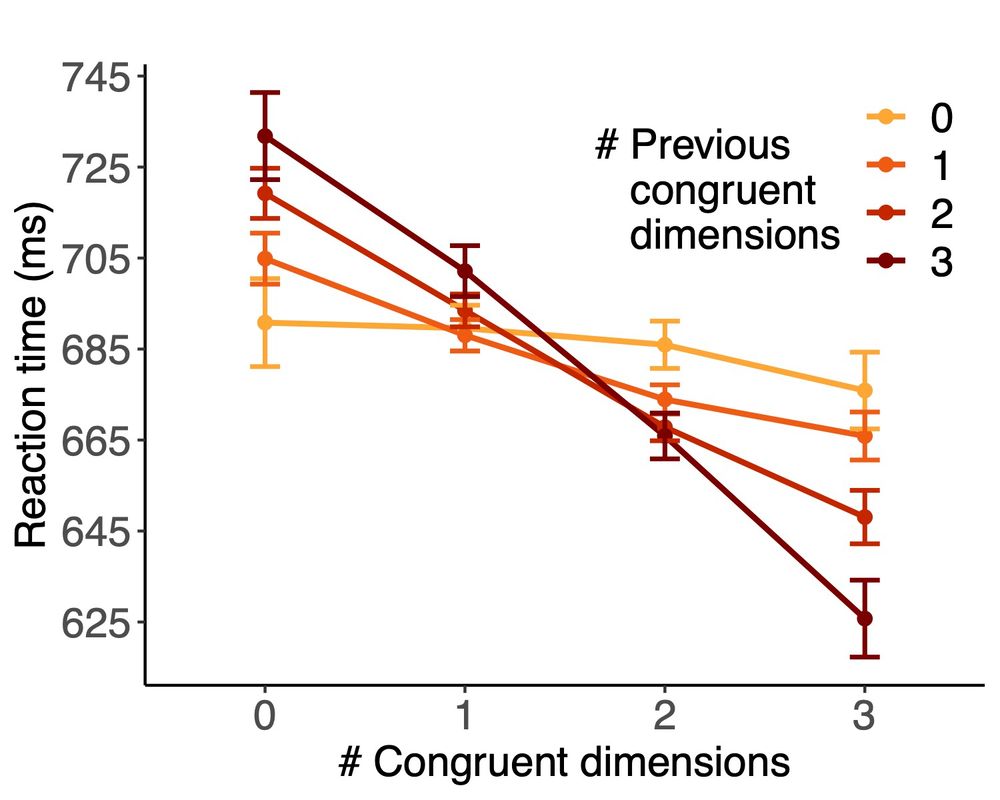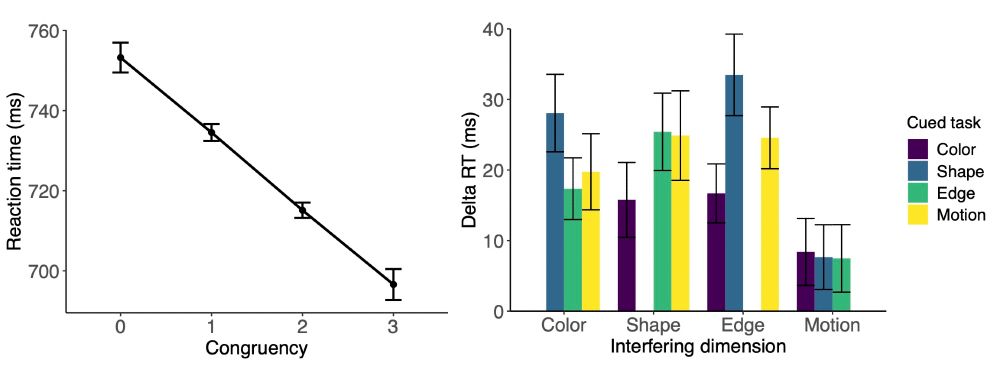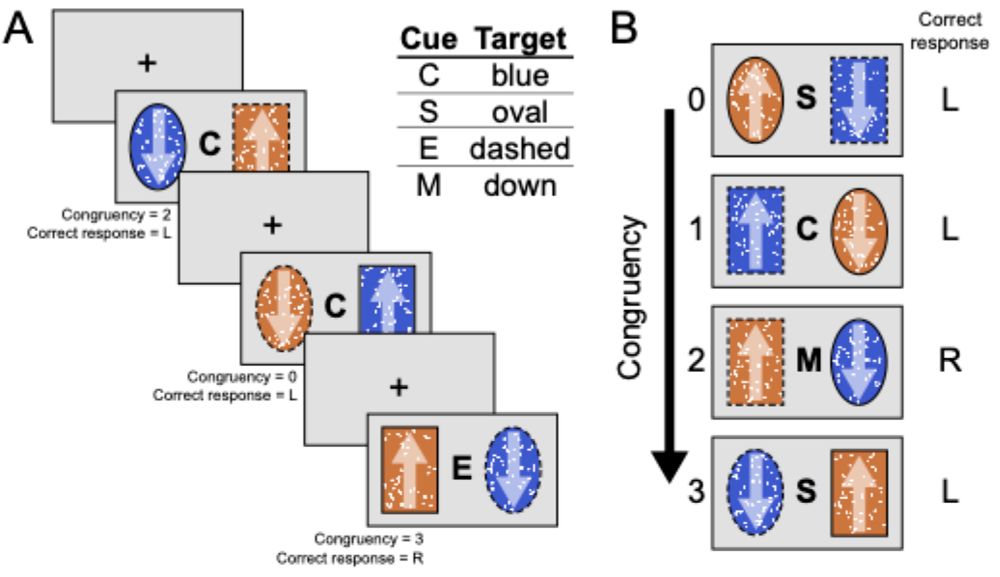
cognitive control | decision making | reinforcement learning | their neural codes
Plinths and hinges fan.
This opens the questions of how ‘multidimensional’ conflict is represented in the brain.
Check out the discussion of our preprint for some speculation.
This opens the questions of how ‘multidimensional’ conflict is represented in the brain.
Check out the discussion of our preprint for some speculation.

(Lasagne never helped writing a great epitaph. Life stories did)
(Lasagne never helped writing a great epitaph. Life stories did)
Put simpler, participants adapted attention to a given dimension based selectively on the congruency history of that dimension with the cued task.

Put simpler, participants adapted attention to a given dimension based selectively on the congruency history of that dimension with the cued task.
You are robust to congruency effects the more you have been previously exposed to incongruence (flatter, lighter lines).
(Check out @hritz.bsky.social’s new paper for a related, convergent, finding!)

You are robust to congruency effects the more you have been previously exposed to incongruence (flatter, lighter lines).
(Check out @hritz.bsky.social’s new paper for a related, convergent, finding!)
Also, interference comes from everywhere: Any non-cued dimension interfere with any cued task (as in the best families).

Also, interference comes from everywhere: Any non-cued dimension interfere with any cued task (as in the best families).
The three other dimensions can either facilitate or interfere (i.e., your sister and your aunt).

The three other dimensions can either facilitate or interfere (i.e., your sister and your aunt).
Could you compose your cousin's epitaph while your sister shares his life stories, and also suppress your aunt’s push for more lasagne?

Could you compose your cousin's epitaph while your sister shares his life stories, and also suppress your aunt’s push for more lasagne?

